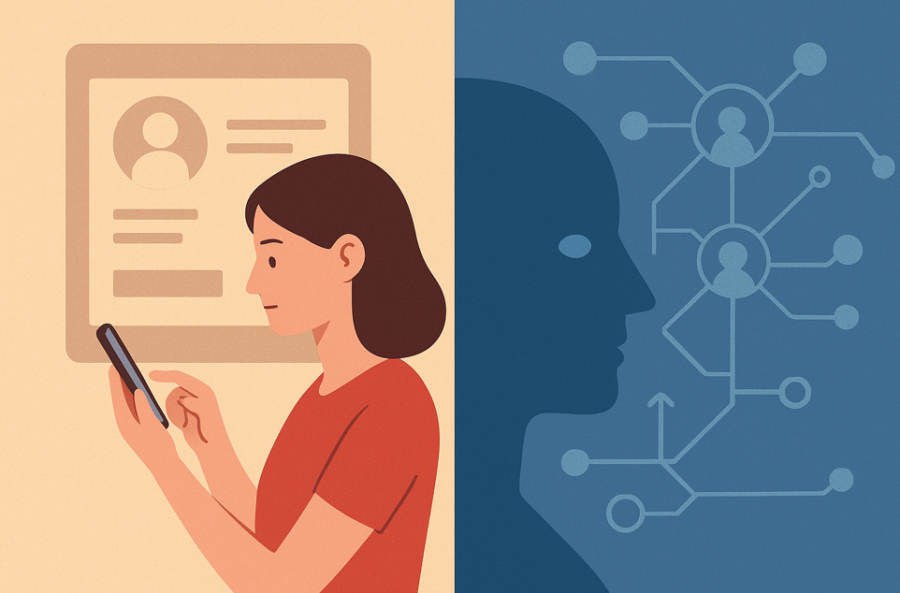In an era deeply permeated by digital media, the way individual identities are constructed is undergoing a fundamental shift from social structures to technological systems. In traditional societies, identity is typically attached to relatively stable frameworks such as family, profession, and social roles. However, the widespread use of digital media has ushered in a “programmable” stage for identity construction, where individuals continuously produce, update, and present themselves through images, text, and data symbols.
Sociologist Erving Goffman (1959) argued that interactions between people are like a performance: we “go on stage” in different situations to play different roles in order to leave a specific impression on others. In the digital age, this performance has extended to social media. People carefully select profile pictures, images, and text on platforms like Weibo, Instagram, or Xiaohongshu to showcase the side they want others to see. In other words, social media platforms have become the “stage” of modern society, and users are both actors and audience members, constantly shaping their “digital selves” within the expectations of different communities.
However, digital identity is not entirely under individual control. van Dijck (2013) points out that algorithms and platform structures play a crucial role in identity construction. Through data tracking, behavioral analysis, and personalized recommendations, platforms not only showcase users’ interests but also subtly reshape their self-perception and social relationships. Digital identity thus becomes a result of both “self-expression” and “being shaped by algorithms.”
In this technologically disciplined environment, individuals must possess media reflection capabilities and identity management awareness to maintain their subjectivity. Digital identity is not merely a tool for self-display but a result of dynamic negotiation between social power, technological logic, and individual consciousness. It reminds us that in the process of being seen, we are also being redefined.
Reference list:
1.Goffman, E. (1959). The presentation of self in everyday life. [online] psycnet.apa.org. Available at: https://psycnet.apa.org/record/1959-15044-000.
2.van Dijck, J. (2013). The Culture of Connectivity: A Critical History of Social Media. [online] academic.oup.com. Oxford University Press. Available at: https://academic.oup.com/book/9914.

